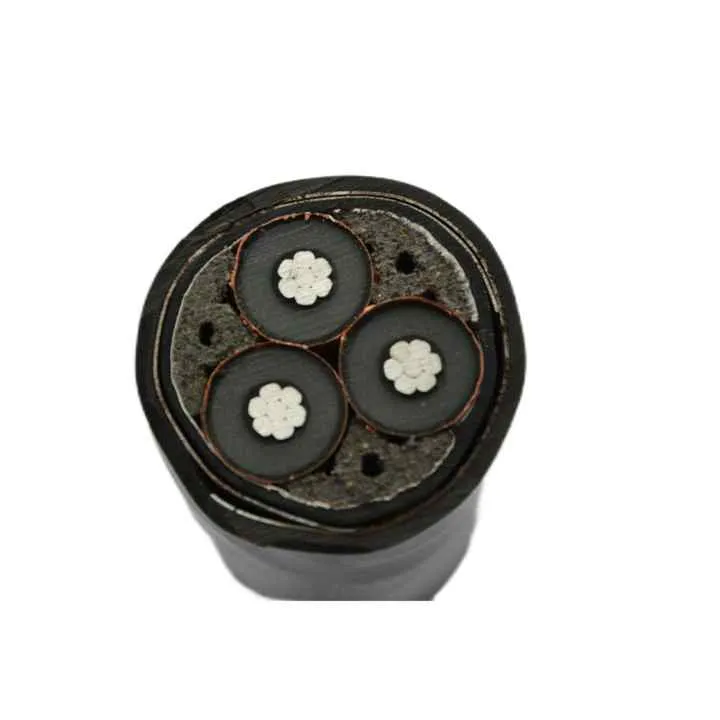Comprehensive Guide to Underground Cables
Time: 2025-05-06 15:53:40
Source: Henan Province Jianyun Cable Co., Ltd.
Introduction
Underground cables are electrical cables designed to be buried below the Earth's surface for the transmission and distribution of electricity. They are commonly used in urban areas where overhead lines are impractical due to space constraints, aesthetic considerations, or safety concerns.

Construction
Underground cables are engineered to withstand environmental factors such as moisture, soil pressure, and chemical exposure. A typical underground cable comprises:
-
Conductor: Usually made of copper or aluminum, responsible for carrying electric current.
-
Insulation: Materials like Cross-Linked Polyethylene (XLPE) or Ethylene Propylene Rubber (EPR) are used to prevent electrical leakage.
-
Metallic Sheath: Provides protection against moisture and mechanical damage.
-
Bedding: A layer that separates the metallic sheath from the armoring.
-
Armoring: Steel wires or tapes that protect the cable from mechanical stresses.
-
Serving: An outermost layer that protects the cable from environmental factors.
Types of Underground Cables
Underground cables are categorized based on their voltage ratings:
-
Low Voltage (LV) Cables: Up to 1,000 volts.
-
High Voltage (HV) Cables: Up to 11,000 volts.
-
Super Tension (ST) Cables: Up to 33,000 volts.
-
Extra High Tension (EHT) Cables: Up to 66,000 volts.
-
Extra Super Voltage (ESV) Cables: 132,000 volts and above.
Technical Specifications
-
Rated Voltage: Varies based on application (e.g., 0.6/1 kV, 6/10 kV, 12/20 kV).
-
Conductor Material: Copper or Aluminum.
-
Insulation Material: XLPE, EPR, or PVC.
-
Sheath Material: PVC, PE, or Lead.
-
Armoring: Steel Wire Armored (SWA) or Steel Tape Armored (STA).
-
Operating Temperature Range: Typically -15°C to +90°C.
-
Installation Depth: Generally 0.75 to 1.2 meters, depending on local regulations.
Applications
-
Urban power distribution networks.
-
Industrial plants and factories.
-
Underground railways and tunnels.
-
Substations and power generation facilities.
-
Renewable energy installations.
Advantages and Disadvantages
Advantages
-
Aesthetic Appeal: Eliminates the visual clutter of overhead lines.
-
Safety: Reduces the risk of accidents associated with exposed wires.
-
Reliability: Less susceptible to outages caused by weather conditions.
-
Space Efficiency: Ideal for densely populated urban areas.
-
Reduced Maintenance: Lower maintenance requirements compared to overhead systems.
Disadvantages
-
Higher Installation Costs: Due to the need for excavation and specialized materials.
-
Maintenance Difficulties: Faults are harder to locate and repair compared to overhead systems.
-
Limited Flexibility: Modifications or expansions can be more complex and costly.
Technical Data Table
|
Voltage Class
|
Conductor Size (mm²)
|
Insulation Type
|
Sheath Type
|
Armoring
|
Typical Application
|
|
0.6/1 kV
|
1.5 - 400
|
XLPE
|
PVC
|
Optional
|
Residential and Commercial Buildings
|
|
6/10 kV
|
35 - 500
|
XLPE
|
PE
|
SWA
|
Industrial Plants
|
|
12/20 kV
|
95 - 800
|
XLPE
|
PE
|
SWA
|
Substations
|
|
18/30 kV
|
150 - 1000
|
XLPE
|
PE
|
SWA
|
Power Transmission
|
|
21/35 kV
|
240 - 1200
|
XLPE
|
PE
|
SWA
|
High Voltage Networks
|
Conclusion
Underground cables offer a reliable and safe method for electricity distribution, especially in urban settings. While they come with higher initial costs and maintenance challenges, their benefits in terms of safety, aesthetics, and reliability often outweigh the drawbacks. Proper planning, installation, and maintenance are key to maximizing the advantages of underground cabling systems.
